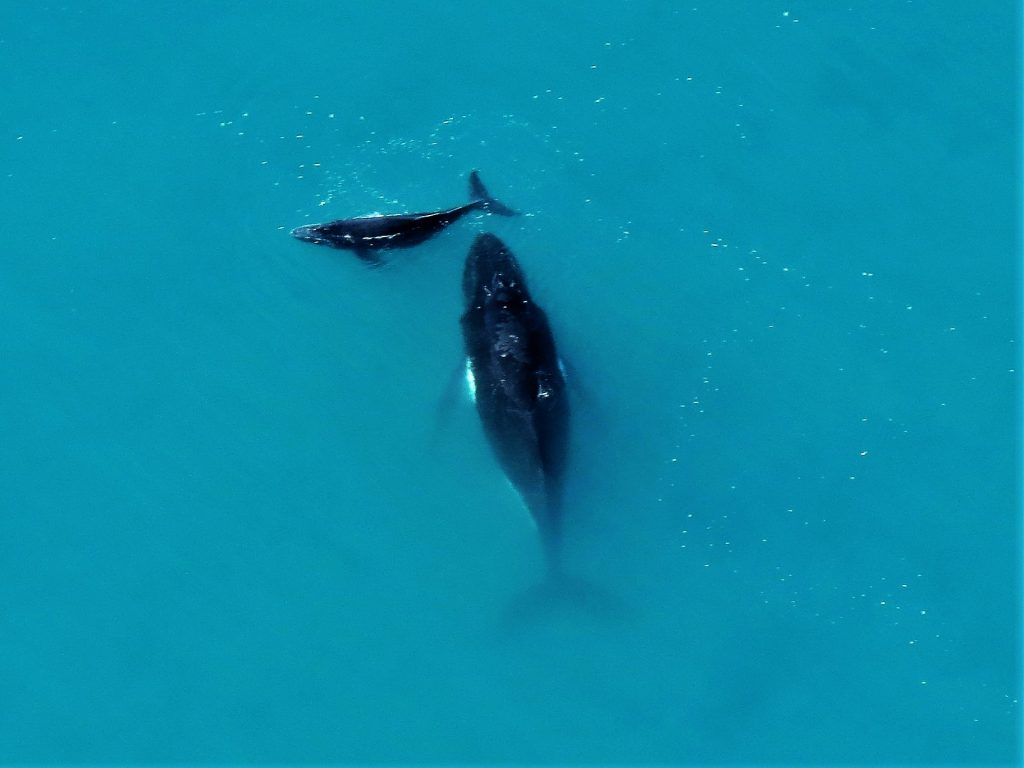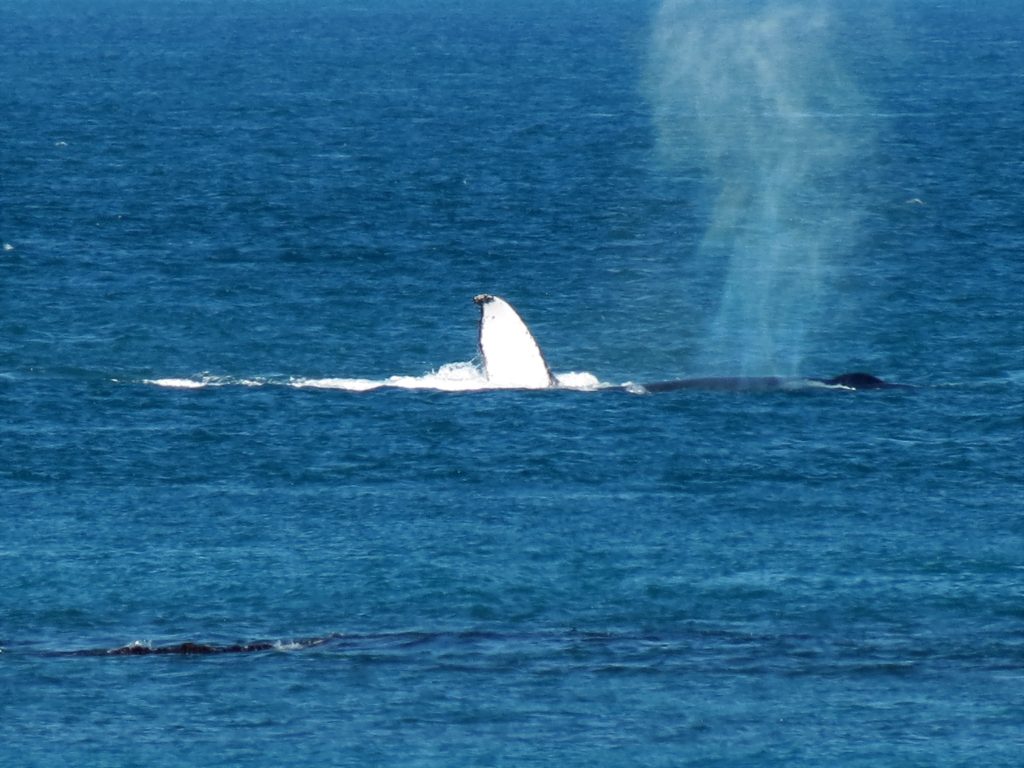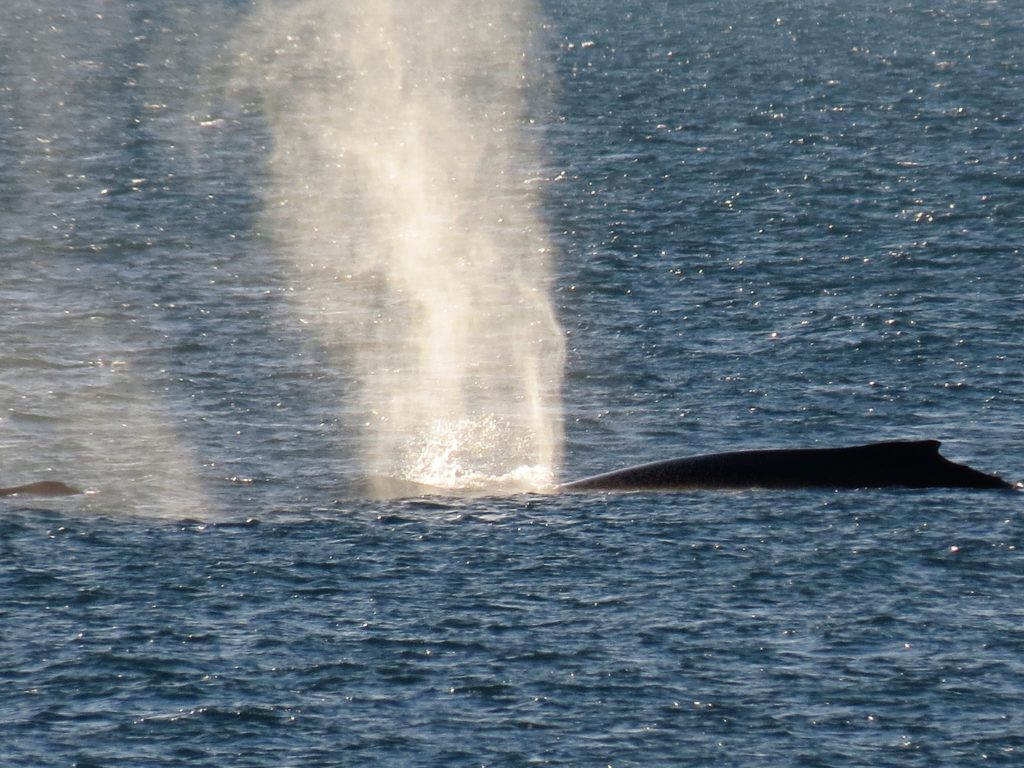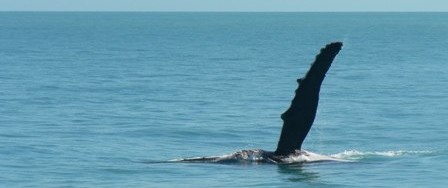It is a privilege to see humpback whales using Arraluli areas to give birth and nurse their young.
 And this year, like every other, the whales have used the area as their own for several months.
And this year, like every other, the whales have used the area as their own for several months.
The inshore areas between Doubtful Bay, Montgomery Reef and the mainland tribal reserve in Arraluli country, is a special area where many mothers come to not only give birth, but then nurse, train and socialise infants for a journey back to the south pole.
August is considered the peak time for the migration and birth cycle, and for this month we conducted the first whale survey by traditional owners for several years.
Isobel’s daughter Naomi had already been keeping an eye on the presence in country in the lead up, relaying plenty of whales appearing along the coast for the month of July, running north from Doubtful Bay up towards Augustus Island, where they might head out back to the Buccaneer or return down through Doubtful Bay.
We set up the observation site for August on shore from the Arraluli area of Widjingarri Butt Butt.
This gives a fixed point with a view of several kilometres east and north, with viewing increased the further behind you walk up onto the ridge behind the camp. With large tides, it often increases distance to subject.
Over five weeks we watched the regular occurrence of the humpbacks moving up and down the water corridor between the reef and land.
Records were taken of the locations, directions and behaviours of the humpbacks.
Plenty of newborn whales were seen with their mothers and in social groups, and we even observed young whales playing together on several occasions.
The waters have dreamtime tracks where the behaviour synchronises with the formations of the land, making a wonderful viewing spectacle as whales mimic the creation dance of inter-tidal reef markers, islands and other natural markers.
It is also clear to us looking at the way the whales use the area, why the dreamtime stories are specific about young whales being protected in this area. There is a very observable social and biological function to the behaviour of the individuals and groups that use this area, including feeding on what are likely select diets for a dietary need.
“We never forget our old people and how they see these things, when we are out here. They knew a lot more than we do about how these things worked, and our stories in our culture tell us a lot about the dreaming of this place, where all the animals and nature is part of that story,” Isobel says.
“Every day for the month we saw whales come past, and on many days the mothers and young were right off the front of our camp, teaching their young ones how to move or behave.”
Observations included mothers showing infants how to swim, even rather dramatically chastising or commanding their attention on occasion, and groups in various stages of forming relationships and preparations to make the trip back south.
“We saw that little one they were teaching it how to use its flipper, its bibbi (Worrora word for whale flipper). The other one would do it and blow out its blowhole, and the little one would follow and hit its flipper and blow out of its blowhole,” Isobel says.
In one episode a young calf was observed by itself for several days, and was finally found by its mum a well-known bay, at the same time as it was visited by Isobel’s sons Neil and Bart.
“We don’t know things like if the whale got lost from its mum or its mum was having difficulties.”
What we do know is that there is an incredible social interaction taking place as the new families form. By seeing whales at this stage of their life, you can see so much more of the individual situations that are taking place among them, and how needs are different as evidenced by behaviours.
“It’s amazing,” Isobel says. “This is what makes us want to be over-protective of them at these times. You know this place they are coming here for things they need.”
“They are coming so close, and we don’t want to have any obstacles, if you know what I mean.”
As if to make a point about what this place is all about, when we left in early September, an estimated 15 mothers and calves were sighted by helicopter along from the camp to Umida country, in the Worrora south.
And just like we have in recent years lost family and friends (and these were all of course noted in country), nature’s storyline delivered again. The season ended with a report of a dead whale, suspected of dying of old age, being eaten by crocodiles, and millions of online viewers, on Montgomery reef.
For us, this incident had a special consideration, because some of the biggest bulls ever witnessed, late in season, were involved in breaching activities in that very area, at the horizon line from the shore camp, heading out towards the land of the dead, in one of the most impressive duelling breach exercises witnessed in the month. It was an amazing spectacle, one that, at the time, made us think the possibility that one had gone so high, and hit so hard, that he never bounced back – and laid where he landed, in a favourite place, having made it once more here, crossed over to the other side his spirit returned to the land. This was just one of many wonderful whale moments this season that reminds us that this is such an important and wonderful part of the world, and a place that deserves our attention to its preservation.
breaching activities in that very area, at the horizon line from the shore camp, heading out towards the land of the dead, in one of the most impressive duelling breach exercises witnessed in the month. It was an amazing spectacle, one that, at the time, made us think the possibility that one had gone so high, and hit so hard, that he never bounced back – and laid where he landed, in a favourite place, having made it once more here, crossed over to the other side his spirit returned to the land. This was just one of many wonderful whale moments this season that reminds us that this is such an important and wonderful part of the world, and a place that deserves our attention to its preservation.
